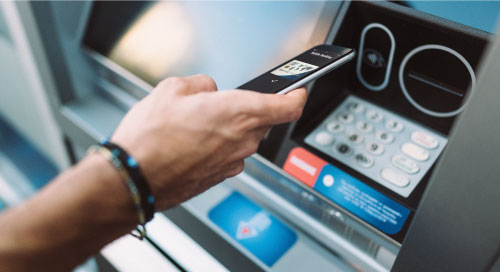AI Technology Unites Physical and Digital Banking

Banks have struggled for years to achieve the right mix of in-person and digital services. Facing enormous competition from fintech startups and retailers, they have closed thousands of branches and spent billions in an attempt to create their own digital universe. But legacy technology slowed the development of innovations they needed to compete.
In the meantime, banks have discovered not all customers are digital fans. One study found that little more than half of people use bank websites or mobile apps, and nearly a quarter visit a teller more frequently than a bank website.
Digital customers also prove less loyal than those who chat with familiar faces at a branch. “Banks discovered that the hard way—by losing customers,” says Antonio Bolaños, senior business development manager for Minsait, an Indra company.
Some banks doubled down on their remaining branches, adding amenities like cafes, financial seminars, and kids’ play areas. Still, it was hard to know if they were striking the right balance between personal attention and the convenience of apps.
A World of Microservices
Today, savvy banks take a more nuanced approach, offering branch customers a combination of digital and in-person services based on individual needs. “Banks are rethinking their entire strategy. They’re moving from omnichannel to opti-channel—helping every customer select the right channel for each transaction,” Bolaños says.
To help banks succeed in today’s challenging environment, Minsait, which provides digital transformation consultancy and information technologies, offers an array of both digital and physical microservices ranging from customer analytics to contactless ATMs. Like people, bank branches have different needs and must be able to choose the services that best suit their clientele, the company believes.
To function smoothly, microservices must integrate with existing technology. Minsait’s platform allows banks to easily add new services and connect them with back-end systems.
Today, savvy banks take a more nuanced approach, offering branch customers a combination of digital and in-person services based on individual needs. @IndraCompany
Learning Customer Preferences with AI Technology
Minsait has developed more than 20 microservices, and it’s just getting started, Bolaños says, adding, “Our goal is to create a new service every three months.”
Microservice applications that collect and analyze customer information are a great place for banks to start.
In branch offices, banks can install Minsait’s Intel® processor-powered smart digital signs, which use AI and computer vision to determine customers’ gender and relative age, tailoring messages accordingly. By crunching numbers to correlate customer viewing patterns with sales for products displayed, banks learn which services are preferred by which types of customers.
The Contactless ATM
The COVID-19 pandemic spurred Minsait to accelerate development of an ATM that doesn’t require customers to insert a bank card or use a touchscreen. Instead, customers who have enrolled in a bank’s voice recognition program can identify themselves by speaking into a microphone embedded in the ATM. Alternatively, they can log onto the bank’s mobile app to verify their identity. Once identified, customers complete transactions using voice commands or navigating the app.
Sessions are monitored and an automated system routes all information to the correct department. Simple transactions occur without human intervention, and the real-time routing speeds those requiring a staff decision.
For example, if a customer wants to cash a check that would exceed their withdrawal limit, people in the back office receive an image of the check and have information about the customer. They can approve the transaction in real time and send the customer their money right away.
For more complex transactions, customers can interact with a representative through an ATM-connected videochat application. Representatives can cross-sell and upsell, transforming the ATM into a sales channel.
Cash in 5 Seconds
For the simplest transactions—such as routine withdrawals—banks don’t need a full-service ATM, Bolaños says. Customers can reserve cash in advance with a mobile app, then drive to a machine that Minsait developed, hold their phone to display a QR code or establish near field communication (NFC), and receive their money.
Augmented Reality to Facilitate Sales
Spanish banks are also using a Minsait microservice that supplies bank customers with augmented-reality glasses displaying pictures and information about homes, cars, and other products and services they can purchase through the bank.
“They can get their car and their financing, too. Banks can sell house alarms, holiday packages, televisions, you name it,” says Bolaños.
To introduce customers to new high-tech services, some banks first install Minsait’s technology in branches, where customers feel safer using it. Minsait also has a network of “banking hubs” where bankers can try out its services.
Although banks have vastly different customers and needs, Bolaños has found something they all have in common. “Every bank we contact, all over the world, wants to transform the branch,” he says. “With microservices, they can develop the right fusion of digital, physical, and self-service channels.”